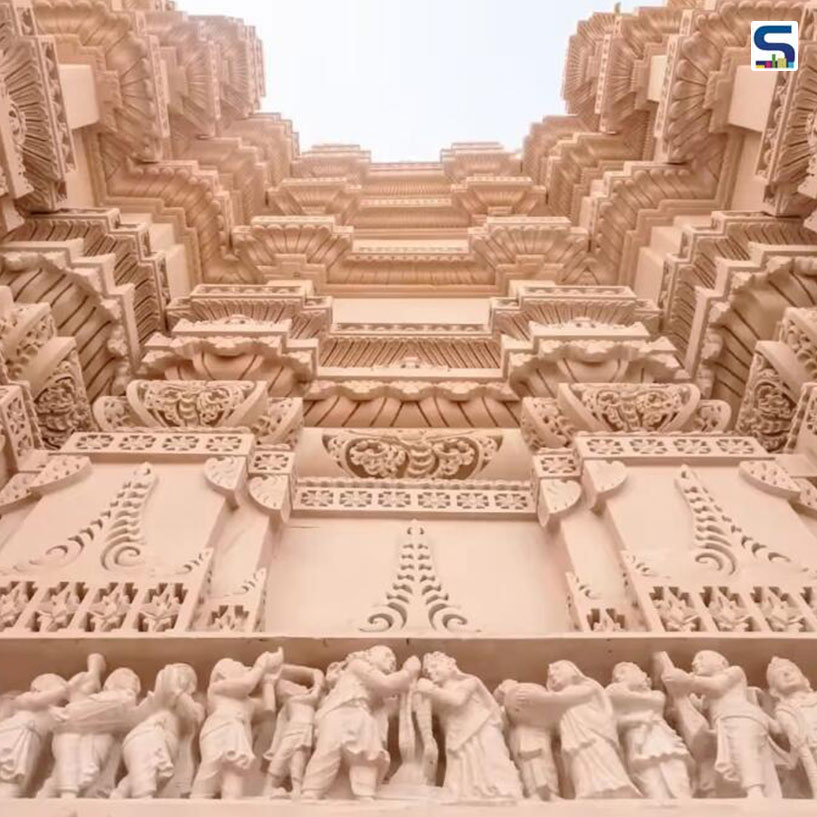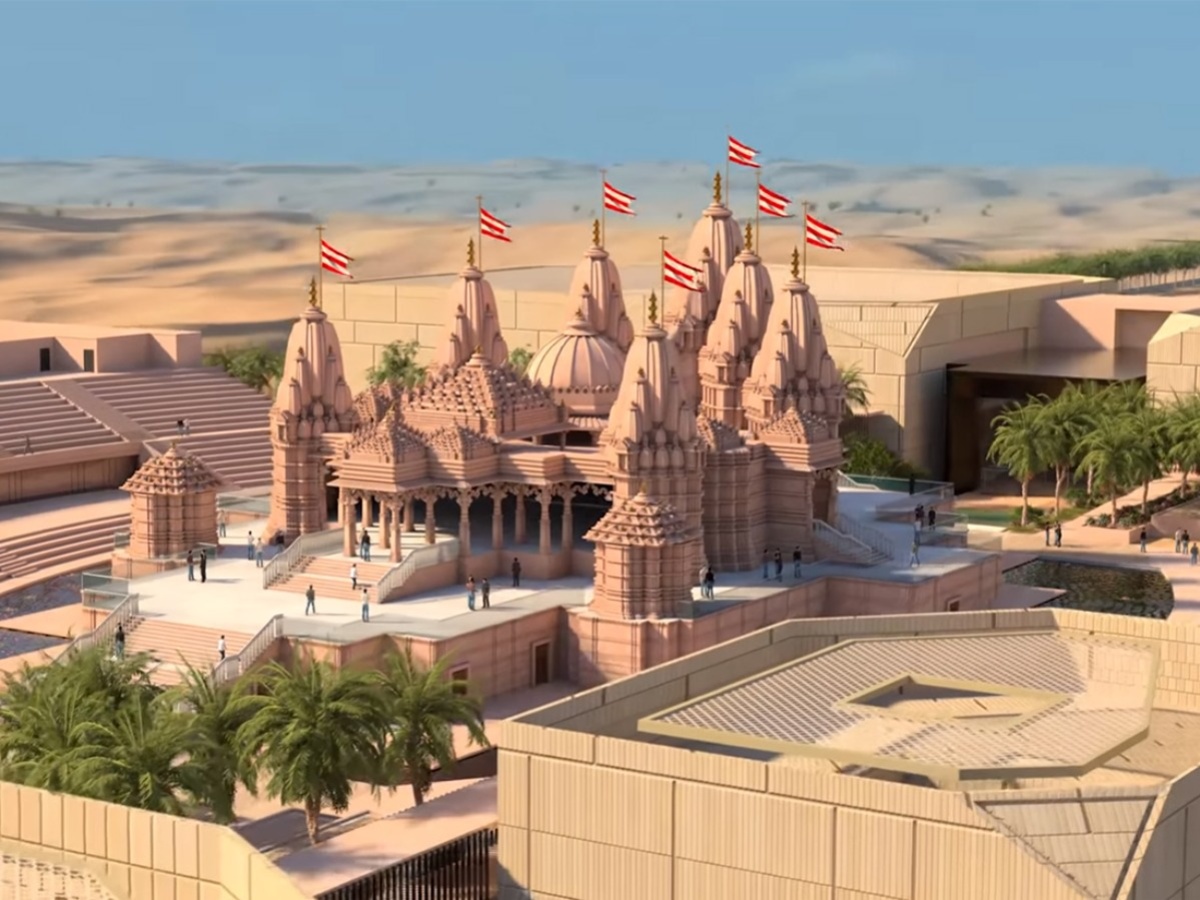
Rising gracefully amidst the desert landscape of Abu Dhabi, the BAPS Hindu Mandir is scheduled to be inaugurated by Prime Minister Narendra Modi on February 14. Recently, ambassadors from 42 countries were given a preview of the temple, where they lauded its role in promoting intercultural harmony. SURFACES REPORTER (SR) provides details about construction, cost, and archaeological features of this UAEs First Hindu Temple, which stands as a remarkable fusion of tradition and modernity, aspiring to become the largest stone temple in West Asia.
During the temple preview, Ambassador Sunjay Sudhir expressed his excitement, emphasizing the journey from conceptualization to realization. Swami Brahmaviharidas, the project head, provided insights into its historical significance, construction process, and global impact. Recognized as a promoter of interfaith and intercultural harmony, the temple has received appreciation from leadership in both the UAE and India.
Construction and Architectural Design
Covering an area of 27 acres in Abu Mureikhah, near Al Rahba along the Dubai–Abu Dhabi Sheikh Zayed Highway, the BAPS Hindu Temple is more than just a place of worship. It stands as a remarkable architectural marvel. Built with a budget of Rs 700 crore, the temple's exterior is meticulously designed, boasting seven spires, each representing an Emirate of the UAE. This blend of cultural symbolism and architectural magnificence is truly seamless.

Material Selection
To build the temple, large quantities of pink sandstone were transported from northern Rajasthan to Abu Dhabi. Chosen for their resilience against extreme temperatures, these stones from northern India can endure the intense summer heat, reaching up to 50 °C (122 °F), similar to the conditions in the UAE. Additionally, marble sourced from Italy is utilized in constructing the mandir. In the past three years, more than 2,000 artisans hailing from Rajasthan and Gujarat have meticulously carved the 402 white marble pillars intended for the temple.
A Sustainable Vision
Embracing eco-friendly principles, the temple incorporates fly ash into its concrete structure, minimizing its ecological footprint. Furthermore, it stands as the first Hindu traditional mandir to undergo extensive digital modeling and seismic analysis, ensuring structural integrity and resilience against natural disasters.
The temple design also integrated eco-friendly elements, including benches, tables, and chairs made from recycled wooden pallets for the food court area. Additionally, a waterfall feature has been included to represent the origins of the three sacred rivers - Ganga, Yamuna, and Saraswati.
Architectural Wonders
Commanding attention with its imposing dimensions, the BAPS Hindu Temple stands adorned with two ghumats (domes), seven shikars (spires), and intricate stone carvings depicting mythological tales. Skilled artisans in India carefully carved over 25,000 pieces of stone to create these stunning designs, showing off their amazing talent and hard work.
A Center for Culture and Education
Transcending its religious significance, the temple complex offers a plethora of amenities, including prayer halls, exhibitions, educational zones, and themed gardens, catering to the spiritual and cultural aspirations of its visitors. Equipped with cutting-edge sensor technology, the temple ensures continuous monitoring of environmental conditions to guarantee the safety and comfort of its devotees.